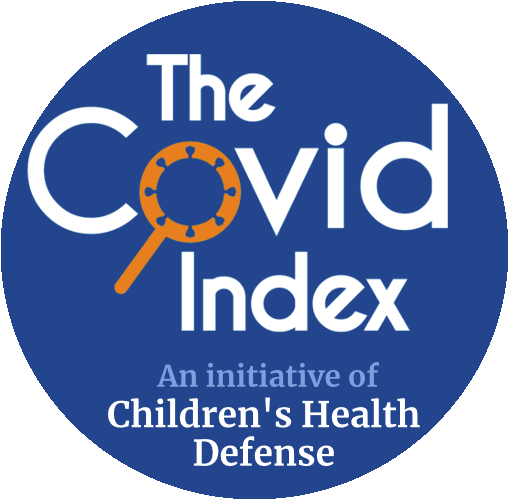Mueller is an interdisciplinary, independent researcher with a PhD in Mathematics (summa cum laude, University of Klagenfurt) and a PhD in Biomedical Sciences (University of Wyoming).
"Abstract
mRNA vaccines have played a massive role during the COVID-19 pandemic and are now being developed for numerous other human and animal applications. Nevertheless, their potential ramifications on the environment lack scrutiny and regulation. On 14 July 2020, the EU decided to temporarily exclude the clinical trials with COVID-19 vaccines from prior environmental risk assessment. Even though billions of doses have been administered and large-scale agricultural and wildlife RNA applications are fast-tracked, there is no knowledge of their environmental impact via the dispersion of vaccine-derived material or their wastage.
This knowledge gap is targeted here via a critical assessment of (1) the pharmacokinetic properties of these products; (2) their impact on the human microbiota; (3) novel risk factors exemplified by the human gut bacterium Escherichia coli resulting in pathogen evolution in the guts of wild animals, (4) findings on mRNA-LNP platforms that implicate extracellular vesicles (EVs) as superior carriers, and (5) potentials of exogenous regulatory RNAs... The arguments provided here establish the rationale for vaccine-derived bioactive material dispersed by EVs, impacted microbiota, and other exposed organisms to foster pathogen evolution, cross-species transfer of biological function, and ... widespread ecosystem disturbances. Evidence is emerging that vaccine-derived molecules, when ingested, could survive digestion and mediate gene expression regulation, host–parasite defense, immunity, and other responses in the consuming animals...
Influences that may lead to microbial alterations
...[T]here is no in-depth research on how [mRNA vaccines] may modulate the human microbiome or other microorganisms...
[T]he history and practical experience of mRNA technologies have confirmed the presence of aberrant/fragmented RNAs in these shots, including dsRNAs [double-stranded RNAs] and various short RNAs. These RNA species... are naturally prone to integration by human microorganisms...
[T]he DNA from the expression plasmids used during manufacturing... ended up contaminating the vaccine product in the form of numerous small DNA fragments. First reported by Kevin McKernan and collaborators, the high level of DNA contamination [in the Pfizer and Moderna products] has independently been verified by several laboratories and acknowledged by the FDA, the EMA, as well as Health Canada...
In addition to the much-debated genotoxicity risk, the DNA fragments, also due to their large number, could directly impact the human microbiome. Notably, McKernan and colleagues have detected the presence of billions to hundreds of billions of DNA molecules per dose in these COVID-19 vaccines. It also appears that the DNA present in the vaccines is protected by encapsulation in the LNPs which greatly facilitates the transfection potential of eukaryotic cells and makes the DNA even more resistant to natural degradation...
mRNA vaccines getting discarded but insufficiently degraded
The dissemination of DNA and xenogenic elements across waterways and the spread of genetically modified organisms (GMOs), antimicrobial resistance (AMR), and pathogens has raised increased concern... Likewise, vaccine wastage, which happens when they are discarded, lost, damaged, or destroyed, has turned into a substantial global issue...
Affecting genetic changes in susceptible organisms
... Importantly, if human microbiota, when adulterated by the injections, get dispersed, they could widely disseminate mobile genetic elements and complement existing risks, such as the novel genetic combinations happening in the wild...
The analogous mechanisms could allow vaccine-adulterated microbiota to infiltrate global water systems, leading to deleterious downstream processes. Thus, vaccine-derived material could affect genetic adulterations in many different organisms.
Open questions and conclusion
... mRNA vaccines may substantially contribute to the evolution and emergence of novel 'zoonotic' pathogens created by the mixing of human and wild bacteria and that of natural and synthetic genetic material in the environment...
Evidence has been emerging that vaccine compounds can be environmentally transferred, ingested by exposed organisms, and survive digestion. This troubling aspect raises serious concerns in light of vaccine material found in the breast milk of vaccinated women and, more generally, for the planned large-scale utilization of RNA vaccination of livestock and animals. If vaccine-derived molecules ingested from food/feed indeed can pass through the GI tract, be transferred to the blood, and accumulate in tissues, they may mediate interkingdom gene expression regulation, host–parasite defense, and many other important biological functions...
The main contributors and risks described above, such as the potential development of new pathogens, contribution to environmental toxins or (epi)genetic adulterations in the open environment, or even the large-scale corruption of food and feed, will not only imperil public and ecosystem health. They also raise urgent questions related to organic/non-GMO regulations, indigenous rights, and whether their aftermath could be characterized as a 'global public health threat' for humans or animals evoking potential emergency restrictive measures."
© The Author(s) 2024. Open Access
his article is licensed under a Creative Commons Attribution-NonCommercial-NoDerivatives 4.0 International License, which permits any non-commercial use, sharing, distribution and reproduction in any medium or format, as long as you give appropriate credit to the original author(s) and the source, provide a link to the Creative Commons licence, and indicate if you modifed the licensed material.
To view a copy of this licence, visit http://creativecommons.org/licenses/by-nc-nd/4.0/.
On September 28, 2024, the author granted permission for The Covid Index to publish this Index Entry.
